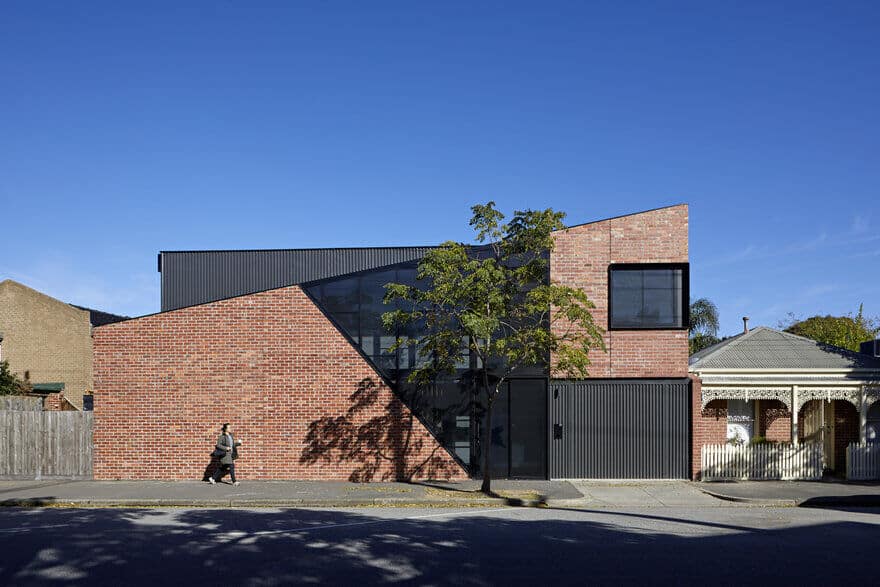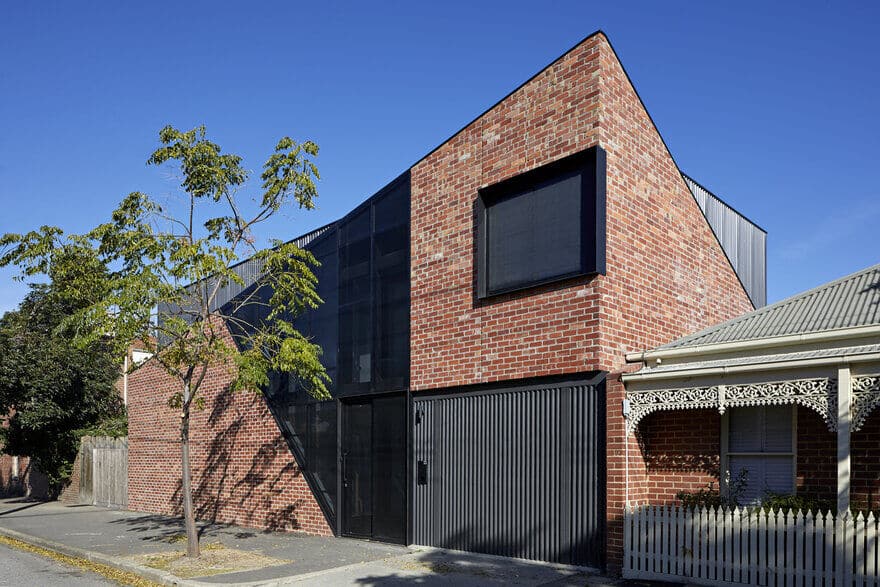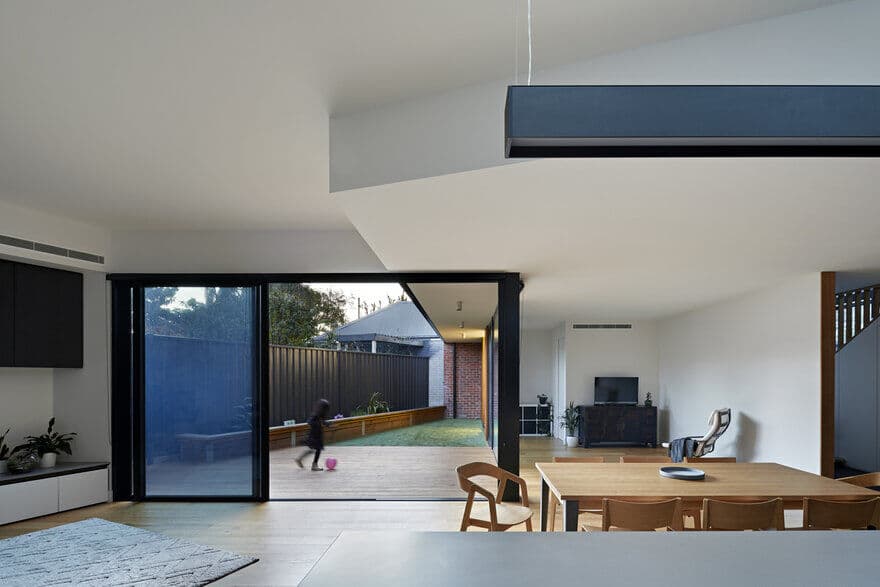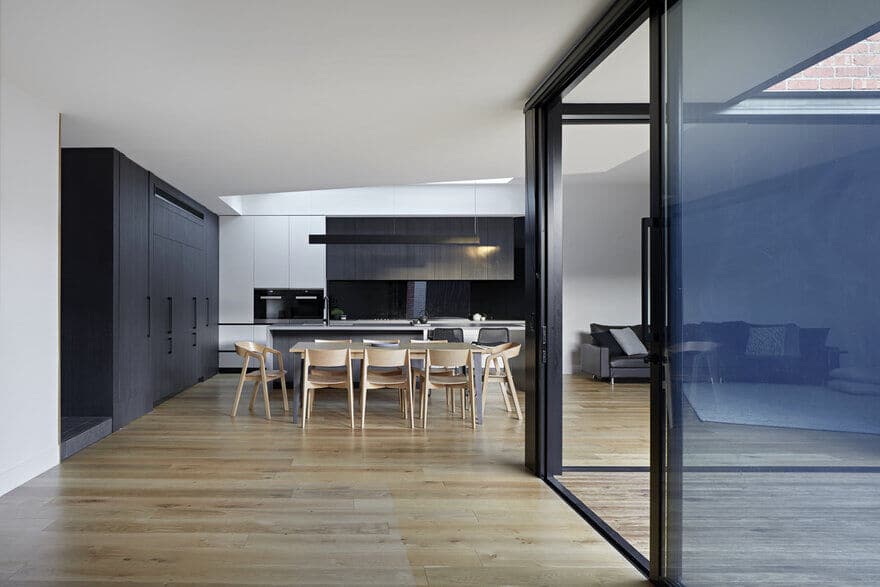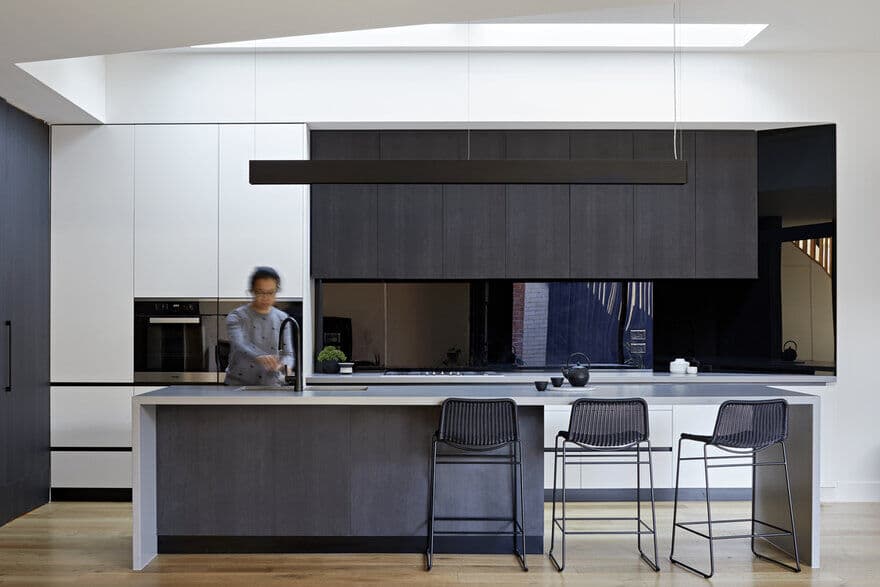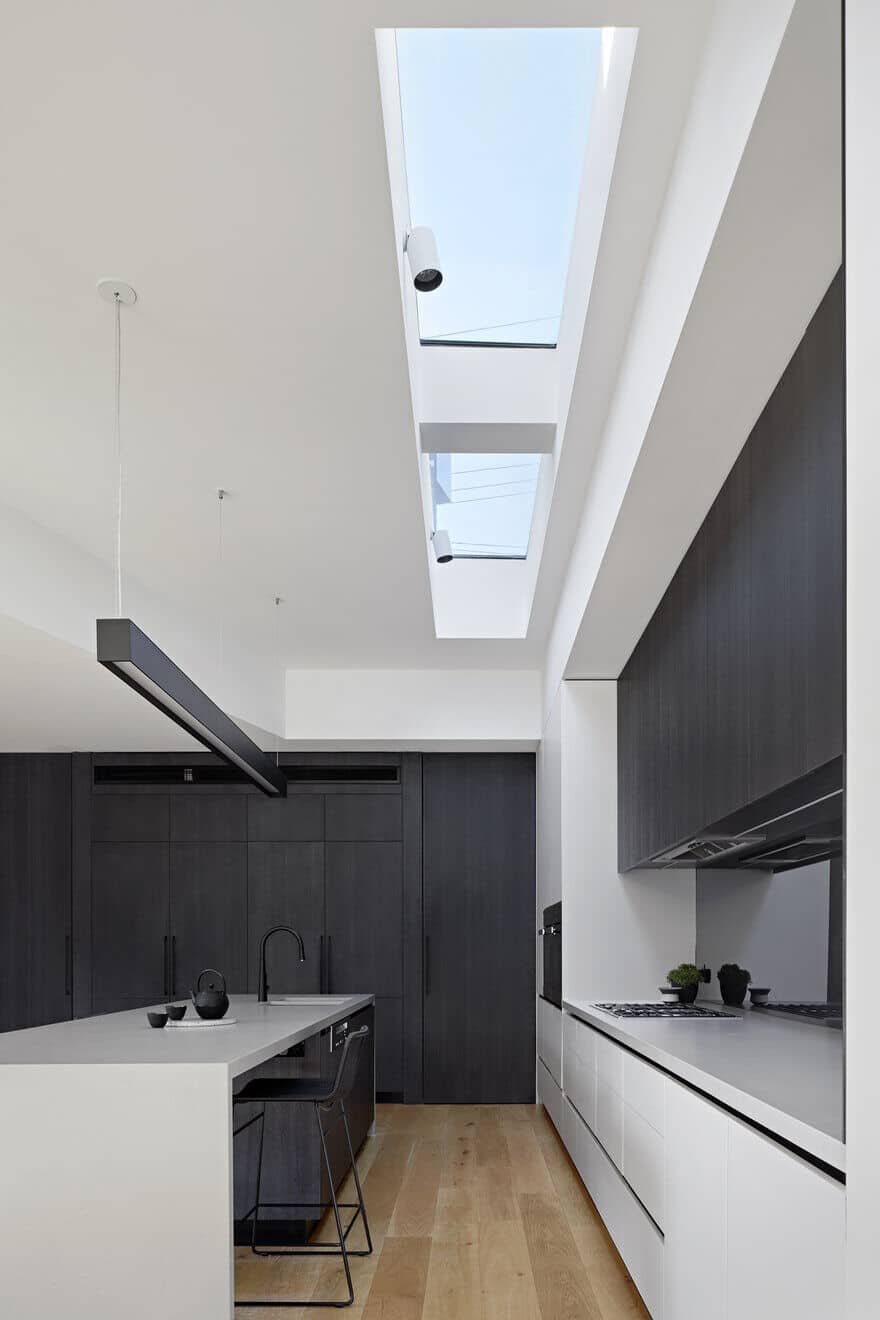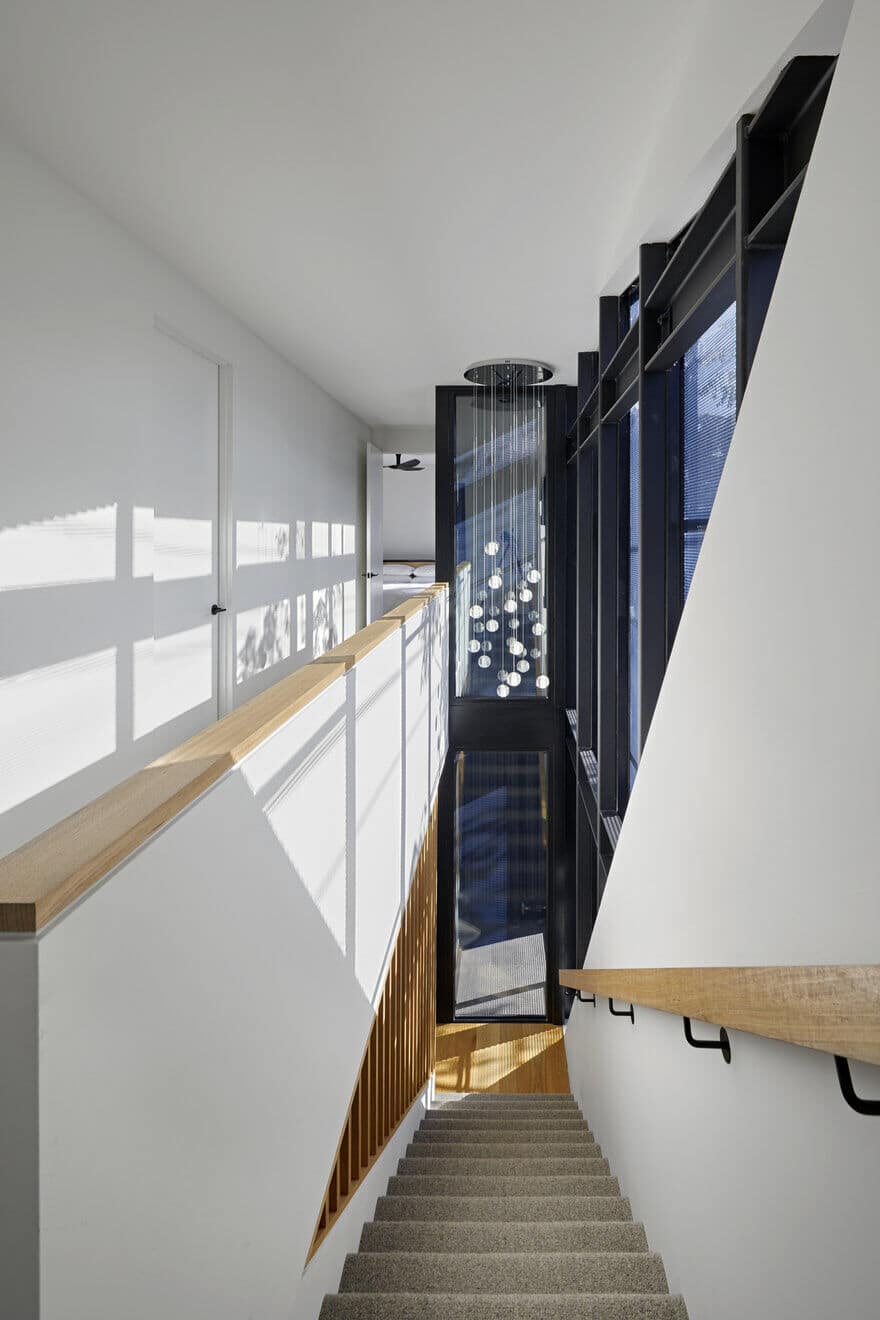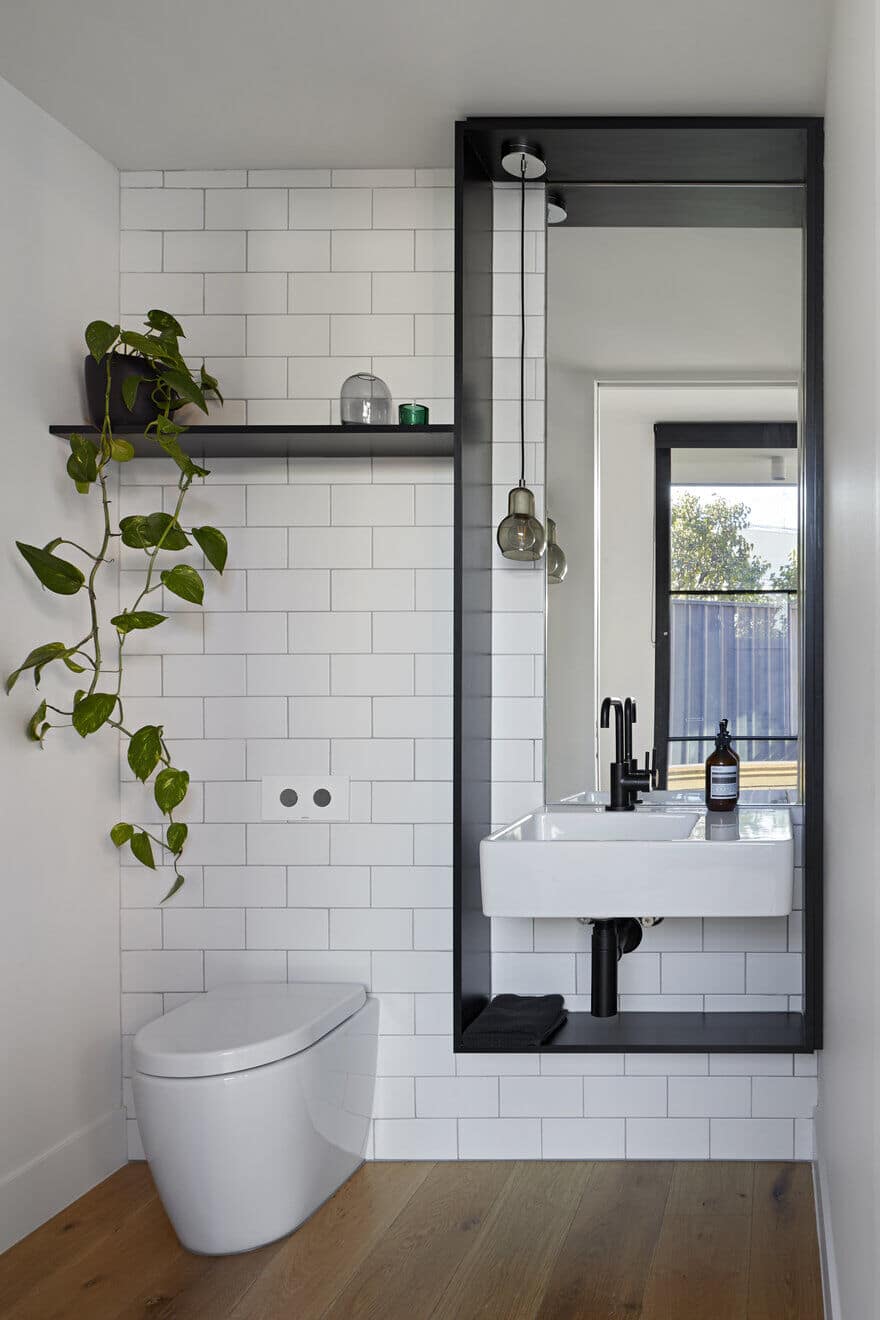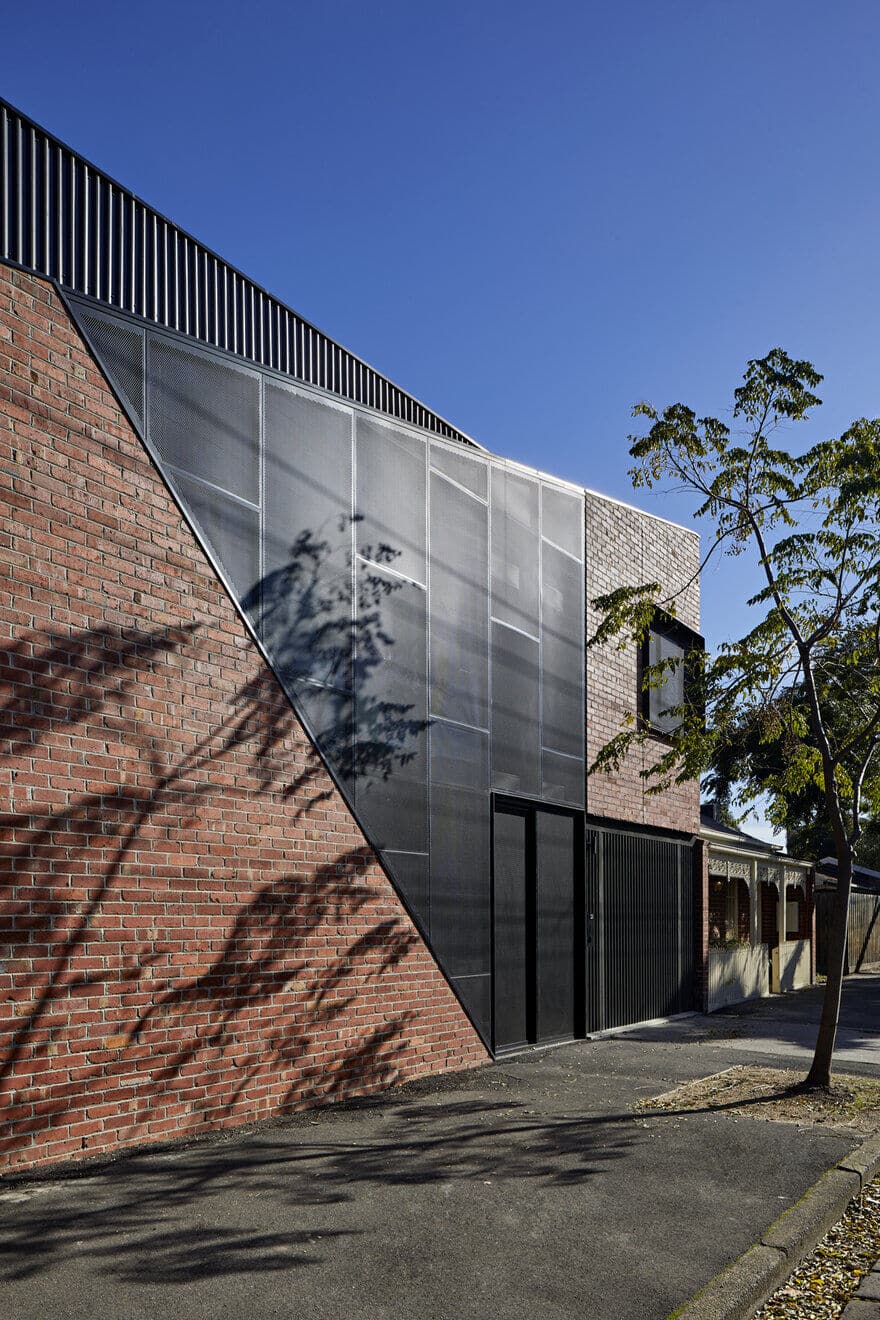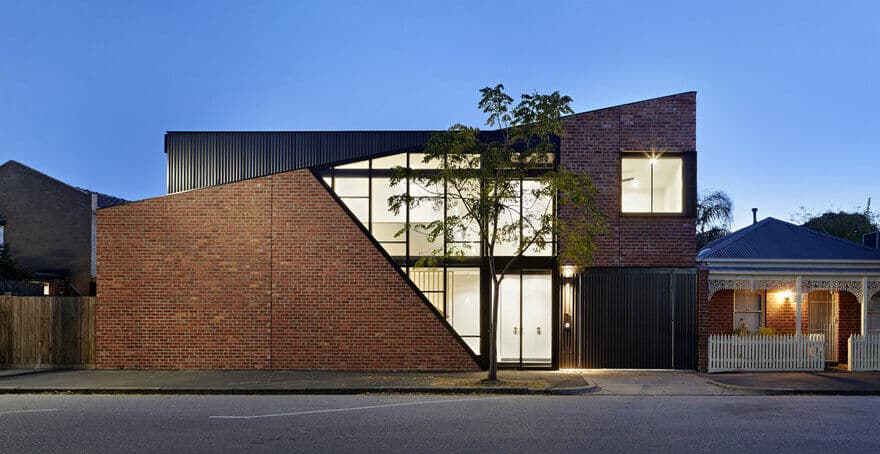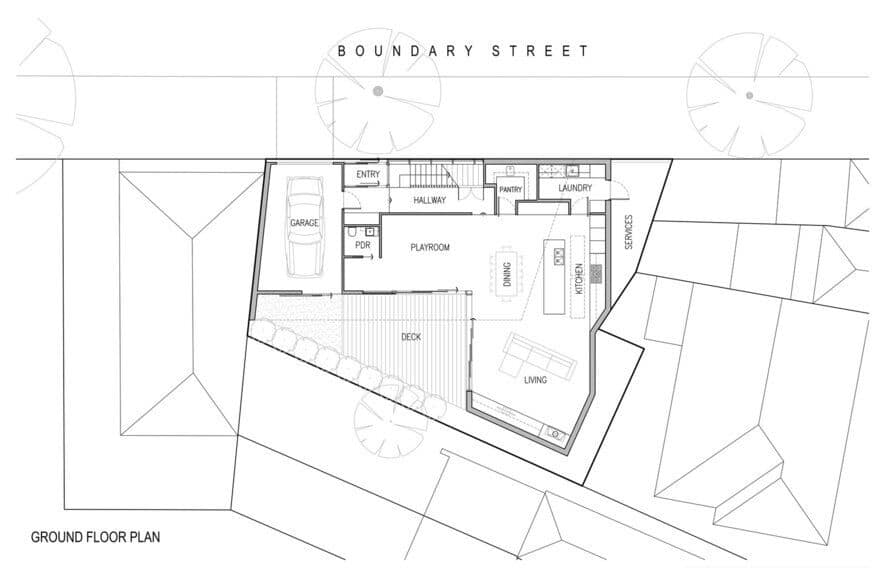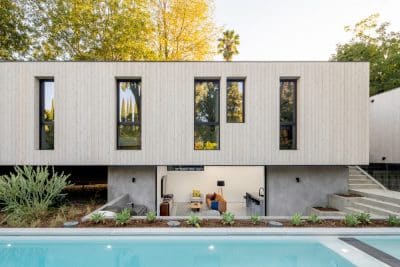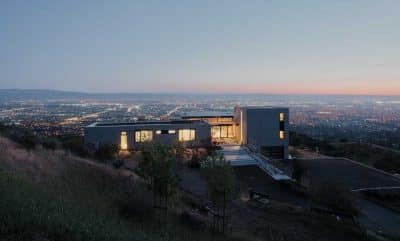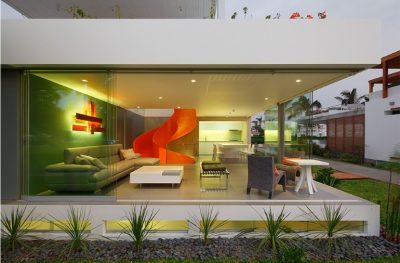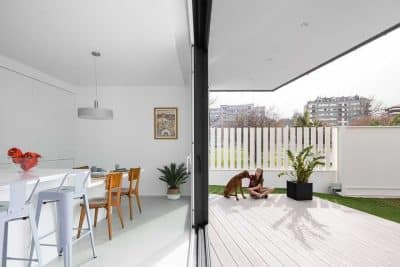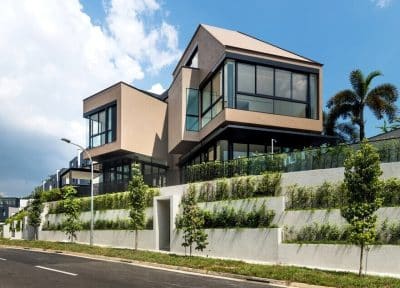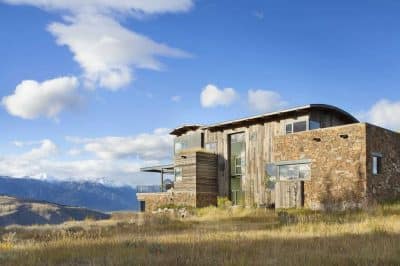Project: Boundary St House
Architects: Chan Architecture
Lead Architects: Anthony Chan, Fauve Jacobs
Location: Port Melbourne, Australia
Area: 239.0 m2
Project Year 2018
Photographer: Tatjana Plitt Photography
The Boundary St House by Chan Architecture is a striking, new house on a small, irregular site in Port Melbourne. The conceptual framework of the project was to draw inspiration from the industrial warehouse building type, and rework it to suit a residential brief.
This site was unique in that it was the left over space between two streets running at different angles in Port Melbourne. As such it was very irregular with a particularly wide frontage, with all the surrounding properties a combination of backyards, side yards and a single Victorian terrace house to the north-west. The site was also located on the border between a residential area and commercial/industrial buildings on the opposite side of the street.
The brief was to design a striking, modern house that made the most of the small site and yet responded to the neighbouring urban fabric and location.
Our response was to start with materials and forms that were prominent in the Port Melbourne area and combine them in a unique manner. Strong, angular lines were used in conjunction with recycled brickwork that made reference to the warehouse aesthetic and the metal cladding and rectangular forms related to shipping containers.
The façade was then ‘peeled open’ via the use of perforated mesh exposing the steel structure beneath. This created varying levels of transparency and privacy whilst allowing natural light into the entrance area. Black sheet metal cladding completed the façade which made reference to the industrial aesthetic in the area whilst also providing contrast and texture.
The entrance alcove, combined with the stairs and the hallway, formed the spine of the house, connecting the main living spaces with the sleeping areas upstairs. This circulation area was filled with light, with the combination of the perforated mesh screening and timber balustrade creating constantly changing light effects on the interior.
This circulation space then narrows down the hallway which then opens up to a playroom and dining area which has been designed around the north facing courtyard which allows light into the living spaces throughout the year. The kitchen is characterised by clean lines and subtle angles, with the ceiling punctuated by a strip skylight above.
In warmer months the dual stacker sliding doors open the living spaces into the courtyard area that expands the sense of space. The first floor sits above the playroom and dining area which is evidenced by the angled bulkhead, which steps up in the living room and kitchen, increasing the sense of space.

